84 F. average high on July 18.
88 F. high on July 18, 2016.
July 19, 1987: The town of Floodwood lives up to its name with nearly 6 inches of rain in two days.
A Noisy Sauna Here in the Jungles of Minnesota
“What dreadful hot weather we have! It keeps me in a continual state of inelegance” wrote Jane Austen. That's putting it mildly.
I should be serving towels with this sauna-friendly forecast. Temperatures aren't close to record highs, but it's the amount of water in the air that has us all hot and bothered.
Which gets into the argument of "relative humidity vs. dew point." Relative humidity is, as the term implies, relative (to the temperature). A RH of 90% on a day when it's 65F doesn't feel so bad, but a 40% RH on a day when it's 95F is intolerable.
On the other hand dew point is an ABSOLUTE measure of how much water is in the air. A 60F dew point is humid, 70F is tropical, 80F is unbearable & dangerous.
Models bring more gangs of noisy T-storms into town tonight; another inch or two of rain is possible. A wave of T-storms ripple along a stalled frontal boundary again Friday, but models still bring a welcome push of cooler, drier, cleaner Canadian air into Minnesota this weekend. By Sunday we'll all be breathing easier!
While much of the east coast fries above 100F. Better them than us.
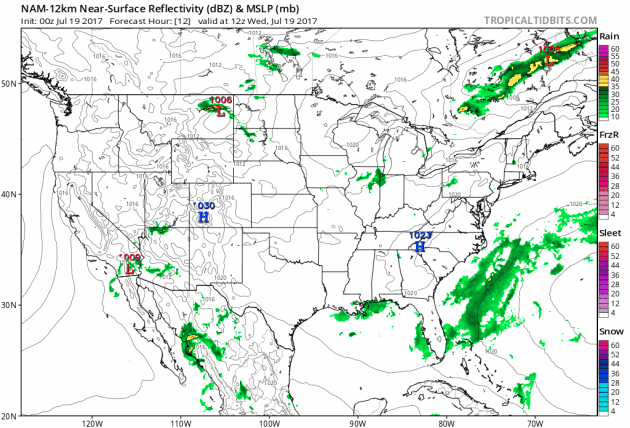
Forecast for Heat
Purdue
University also notes the conditions for heat stress, included in long
form because of the valuable insight (emphasis added).High-temperature
damage to pollination in Indiana almost always occurs in conjunction
with drought stress, rarely by itself. Thus, separating heat stress from drought stress effects on pollination is usually difficult.
Temperatures in excess of 95 degrees, especially when accompanied by
low relative humidity, can dessicate exposed silks, but has little
direct effect on silk elongation. The outer membrane of a pollen grain
is very thin. As a result, high temperatures and low humidity can
similarly desiccate pollen grains once they are released from the
anthers of the tassel. Growers often worry about the direct effects of
high temperatures on the viability of the pollen grains. Indeed, pollen
is likely damaged by mid-90's or greater temperatures, especially when
accompanied by low relative humidity. Temperatures over 100 degrees may
literally kill pollen..."
Disproportionate Number of Tropical Cyclone Deaths in Louisiana and Mississippi. A new paper highlighted at AMS caught my eye: "...More
than half of the U. S. tropical cyclone deaths from 1963 to 2012
occurred in either Louisiana or Mississippi (LA-MS). Even excluding the
fatalities associated with the levee failure in New Orleans, LA-MS had
almost one-quarter of the deaths. In contrast, Florida (FL) and Alabama
(AL) together incurred only about 5% of the deaths even though they
experienced about two-and-a-half times the number of hurricane and
tropical storm landfalls as LA-MS. This means that there were about 25
times as many deaths in LA-MS per landfall event as in FL-AL (and still
about 10 times more when leaving out Katrina's New Orleans impact). A
similar comparison shows LA-MS having fewer landfalls than Texas, but
more than seven times the number of deaths as in Texas (still three
times more when excluding New Orleans in Katrina)..."
Don Fizzles.
As of late last night Don was no longer a tropical storm, with
sustained winds of 40 mph but a disorganized center of circulation and
little chance of strengthening in the days to come. Map: NOAA NHC.
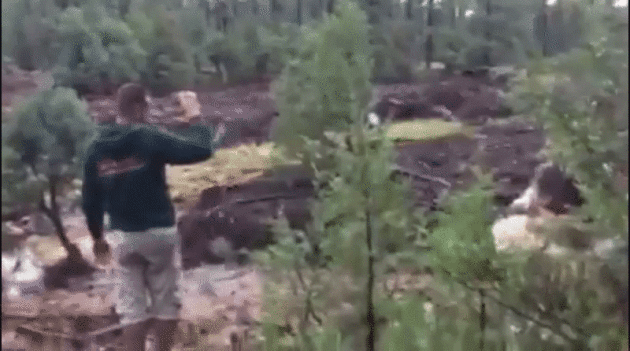
Witnesses Recount Horrific Flash Flood That Killed 5 Kids, 4 Adults in Arizona. It's easy (now) to look back with 20-20 hindsight and remind readers that the NWS issued warnings in advance. But the reality is, especially when people are swimming, they don't have access to apps on their smart phones or their AM/FM radios in their vehicles. It's a real problem. When you're swimming in a stream or river during the summer months situational awareness is critical, keeping an eye on what's happening with the weather upstream. My only advice: check radar on your phone before you take that dip in your favorite creek. CBS News reports: "...The National Weather Service estimated up to 1.5 inches of rain fell over the area in an hour. The thunderstorm hit about 8 miles upstream along Ellison Creek, which quickly flooded the narrow canyon where the swimmers were. Hornung noted that the National Weather Service had issued a flash flood warning about 1 1/2 hours before, "but unless they had a weather radio out there, they wouldn't have known about it. There is no cell phone service out here." The swift waters gushed for about 10 minutes before receding in the narrow canyon, Hornung said. "One witness said all they heard was this tremendous roar," Water Wheel Fire and Medical District Fire Chief Ron Sattelmaier told CBS News correspondent Mireya Villarreal..."
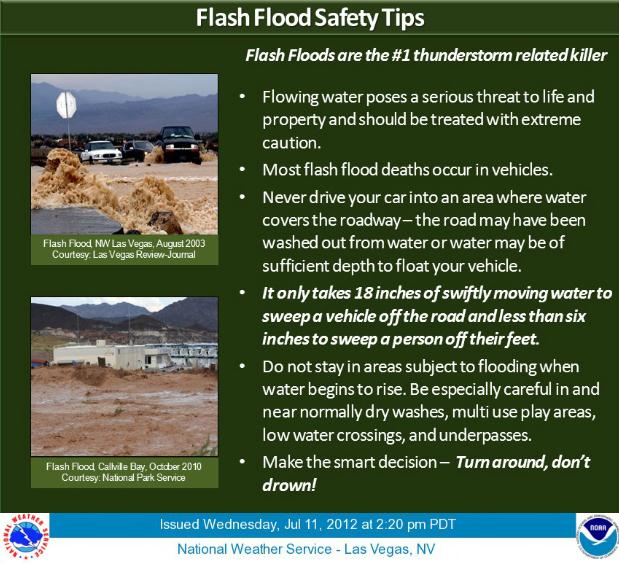
One of the Worst Droughts in Decades Devastates South Europe Crops. Here's a clip from a story at Reuters: "...Drought
in southern Europe threatens to reduce cereal production in Italy and
parts of Spain to its lowest level in at least 20 years, and hit other
regional crops including olives and almonds. Castile and Leon, the
largest cereal growing region in Spain, has been particularly badly
affected, with crop losses estimated at around 60 to 70 percent. "This
year was not bad, it was catastrophic. I can't remember a year like this
since 1992 when I was a little child," said Joaquin Antonio Pino, a
cereal farmer in Sinlabajos, Avila..."
Graphic credit: European Drought Observatory, Reuters.
File photo credit: "This September 1938 photo shows a damaged ferry boat sitting in shallow water in Providence, R.I., following the deadly hurricane of 1938 that hit the Northeast." Leslie Jones/AP Photo.
90 Minute Lead Time on Recent Oklahoma Tornado? Impressive, but is it repeatable? Here's an excerpt of a post at Fox 23 News in Tulsa that caught my eye: "...An
experimental forecast model helped the National Weather Service predict
the path of an Oklahoma tornado hours before the tornado formed, the
agency said. According to a report from the National Oceanic and Atmospheric Administration,
western Oklahoma residents near Elk City were alerted to possible
tornado chances on the afternoon of May 16. “Ninety minutes later, a
dangerous, rain-wrapped EF-2 tornado struck the small town: It killed
one, injured eight, and destroyed about 200 homes and more than 30
businesses...”
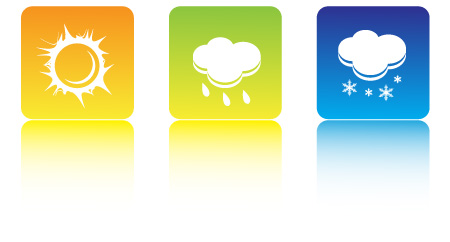
Extreme Weather Forecasting: Looking Years, Even Decades Into The Future, Could Soon Be a Thing. My strong advice: don't hold your breath. But in the spirit of full disclosure and getting our hopes up, here's an excerpt of a story at news.com.au: "...Dr May’s team are now researching if the ensemble method can be used to predict weather events far into the future. By entering in variables, such as possible climate change scenarios, they can test different outcomes. “We’re making use of big data, four petabytes that’s as much as eight million laptops and we need the equivalent of 20,000 laptops joined up to generate that data,” he said. It could lead farmers to move livestock around that might be at risk, for emergency services to bolster civilian cyclone defenses or prepare for bushfires..."
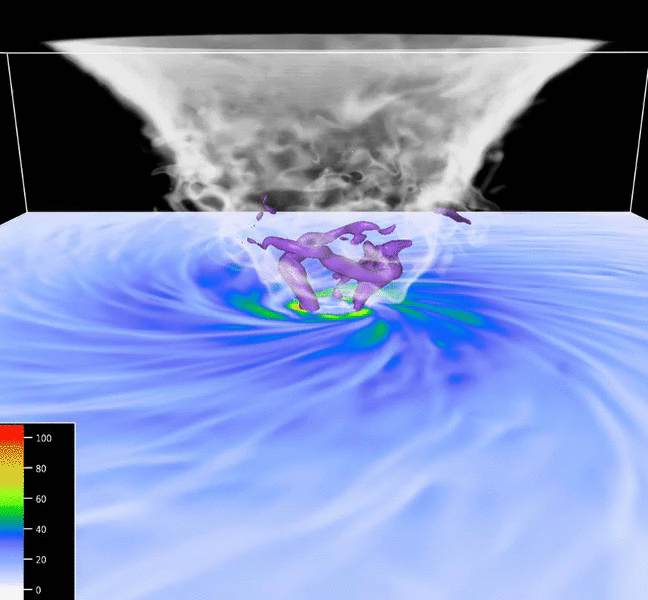
Experts Uncover the Origins of 10 Common Weather Terms. AccuWeather has an interesting post, including an explainer on how tornadoes got their name: "...Navigators exploring the tropics during the 16th century likely derived tornado from the Spanish word “tronar,” or, “to thunder,” according to linguist, teacher and author Janina Klimas. “There’s [also] a word that’s derived from that called ‘tronada,’ which is a thunderstorm,” said Klimas. “It seems that the ‘r’ and the ‘o’ got mixed up, and that’s where you get ‘tornado.’” Harper added that tornado also stems from both “tornar,” which means “to turn” in Spanish, and the Latin word “tornāre.” “At first, it was a very general word for a violent, windy thunderstorm in the tropics that gradually got the sense of turning into it, and it became our word for the funnel cloud storm,” he said..."
Tornado simulation: NCAR.
- Includes the latest available imagery (GOES-16)
- Select products to display by category, name, and time
- Pan and zoom map interface dynamically
- Display current location on map
- Adjust transparency and composite multiple layers
- Animate by relative or absolute time steps
- Save custom favorites..."

The Next Global Blackout Will Be Caused by the Sun. Just because you're paranoid doesn't mean (nature) isn't out to get you. Here's an excerpt from Inverse: "...It’s
difficult to calculate the extent of the damage a Carrington-scale
storm could do to Earth today, but we can be sure that most of the human
population would experience blackouts for far longer than New Yorkers
did in 1977. On the Earth’s surface, the damages to the electrical grid —
and the effects that would have on transportation, sanitation, medical,
and even water infrastructure — would cost around $1 or $2 trillion in
the first year,
with four to 10 years necessary for a full recovery. The storm would
destroy the entire fleet of satellites in orbit, causing up to $70 billion in damage.
Global telecommunications infrastructure would be destroyed so rapidly
that humans wouldn’t even know — or be able to find out — that a solar
storm had hit..."
Photo credit: "Lightning strikes inn Socorro County." Colleen Gino for El Defensor Chieftain.
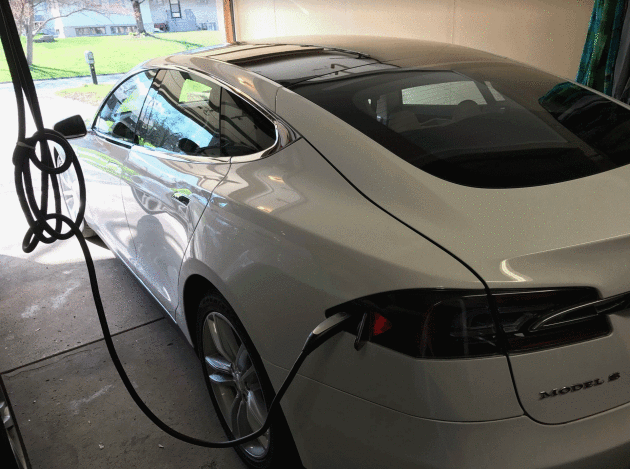
A Brighter Future for Electic Cars and the Planet. Here's an excerpt of an Op-Ed at The New York Times: "...the
skeptics, however, have consistently been overly pessimistic about this
technology. Electric cars face challenges, yet they have caught on much
faster than was though likely just a few years ago. There were 2
million of them on the world's roads last year, up 60 percent from 2015,
according to the International Energy Agency. The cost of batteries,
the single most expensive component of the cars, fell by more than half
between 2012 and 2016, according to the Department of Energy. Tesla has
indicated that it can produce batteries for about $125 per
kilowatt-hour. Researchers say the cost of electric cars will be at
parity with conventional vehicles when batter prices reach $100 per
kilowatt-hour, which experts say is just a few years away. Electric cars
are more efficient, of course, but they also require less maintenance,
which should make them cheaper to own over time..."
Electric Vehicle Outlook 2017.
The electric revolution is coming faster than many realize. Yeah, I'm a
bit biased, but you can't stop progress - you can only slow it down.
Here's an excerpt from Bloomberg New Energy Finance: "...The
EV revolution is going to hit the car market even harder and faster
than BNEF predicted a year ago. EVs are on track to accelerate to 54% of
new car sales by 2040. Tumbling battery prices mean that EVs will have
lower lifetime costs, and will be cheaper to buy, than internal
combustion engine (ICE) cars in most countries by 2025-29...”
Wind, Solar Do Not Harm Power Grid Reliability: Draft U.S. Study. Reuters has the story: "The
growth of renewable power, including wind and solar, has not harmed the
reliability of the U.S. electricity grid, according to a draft U.S.
Department of Energy study, echoing the findings of grid operators
across the country. The conclusion of the draft, dated July and viewed
by Reuters, could ease fears in the renewable energy industry that the
widely anticipated study would be used by President Donald Trump's
administration to form policies supporting coal plants at the expense of
wind and solar. "Numerous technical studies for most regions of the
nation indicate that significantly higher levels of renewable energy can
be integrated without any compromise of system reliability," the draft
says..."
Photo credit: "Snow is seen on the San Gorgonio Mountains behind a windmill farm in Palm Springs, California, January 7, 2016." Sam Mircovich.
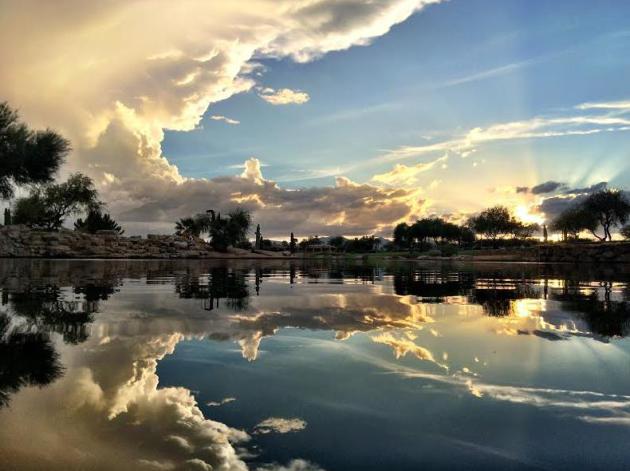
Photo credit: "Elon Musk at the National Governors Association meeting in Providence, R.I., on Saturday. Mr. Musk warned about the dangers of artificial intelligence and said the high price of Tesla shares reflects optimism for the company’s future." Photo: brian snyder/Reuters.
And Now, A Weather Report from Mars. Turns out there are some similarities to weather on Earth, according to Atlas Obscura: "...Pla-García
works at the Spanish National Center of Astrobiology, which is
associated with NASA. Now, along with other two researchers, he has
decided to publish a periodical weather report in layman terms.
The other two weathermen are Antonio Molina, who inputs geological
data, and Javier Gomez Elvira, who processes the data for mainstream
consumption. To make the weather report more appealing to the general
public, the team has made a point of including comparisons with Earthly
weathehr phenomena. In their first report, released on March 15, they
compared the Gale Crater winds with the Chinook air streams in the Rocky
Mountas of North America. Their second report, released on July 11,
discusses the strong whirlwinds known as Dust Devils..."
Image credit: "A towering dust devil in the late-spring afternoon, Amazonis Planitia region of northern Mars." ASA/JPL-Caltech/Univ. of Arizona
TODAY: Murky sun, seasonably warm and sticky. Severe risk by evening. Winds: SE 7-12. High: 85
WEDNESDAY NIGHT: T-storms likely, some severe with locally heavy rain. Low: 71
THURSDAY: Becoming sunny and plenty hot. Winds: E 3-8. High: near 90
FRIDAY: More showers and heavy T-storms likely. Winds: SE 5-10. Wake-up: 72. High: 85
SATURDAY: Damp start, then partial clearing. Winds: NW 10-15. Wake-up: 71. High: 87
SUNDAY: Mix of clouds and sun, low humidity! Winds: N/NE 7-12. Wake-up: 68. High: 81
MONDAY: Plenty of sun, still comfortable. Winds: SE 7-12. Wake-up: 59. High: near 80
TUESDAY: Hazy sun, few T-storms north. Winds: SE 8-13. Wake-up: 61. High: 83
Climate Stories...
Photo credit: "Polar maritime lawyer Scott Joblin, from the Australian National University in Cambria, looks over a map aboard the Finnish icebreaker MSV Nordica as it sets sail in the North Pacific Ocean toward the Bering Strait, Thursday, July 6, 2017. A group of international researchers is sailing into the Arctic Sea aboard the Finnish icebreaker to traverse the Northwest Passage and record the environmental and social changes that are taking place in one of the most forbidding corners of the world." (David Goldman/Associated Press).
Scientists Warn Climate Change Could Bring the Dust Bowl Back Out of the History Books. Of course land use techniques and farming practices have improved dramatically since those dark, dusty days back in the 1930s. Could it happen again? Gizmodo has details on a new study: "...In a study published on July 17 in the journal Scientific Reports, researchers at Princeton University and the National Oceanic and Atmospheric Administration’s Geophysical Fluid Dynamics Laboratory used satellite data from 2003-2015 to resolve some of the lingering uncertainty on prior dust activity models. Their research projects that “climate change will increase dust activity in the southern Great Plains from spring to fall in the late half of the twenty-first century – largely due to reduced precipitation, enhanced land surface bareness, and increased surface wind speed.” In other words, deforestation and the mega-droughts which are increasingly becoming a feature of our changing climate are likely to create conditions ideal for the return of massive dust storms..."
File photo: "A dust storm in April 1935 about to give Stratford, Texas a very bad day." Photo Courtesy NOAA
Great Plains to See More Dust Storms in Second Half of the 21st Century. UPI has more perspective on the study referenced above: "Climate change will bring more dust storms to the Great Plains in the latter half of the 21st century, according to the latest prediction models. According to new models developed by climate scientists at Princeton University and the National Oceanic and Atmospheric Administration, already dry and dusty regions, like southwestern deserts and the central plains, will become drier and dustier in the second half of the 21st century. The increase in dry, dusty conditions in the southern parts of the Great Plains is expected to encourage an increase in the prevalence of dust storms. Global warming is expected to bring warmer temperatures to most of the globe, but the impacts of rising greenhouse gas concentrations on precipitation is more nuanced and geographically dependent. Some places are likely to experience more rain, while other places will get drier..."
File image: PBS.
Photo credit: "A display installed along the shore of Richardson Bay in Mill Valley shows sea level projections." (Alan Dep/Marin Independent Journal).
Photo credit: Associated Press.
Curbelo's Gang of Moderate Republicans Defeats Anti-Climate Change Legislation. Grandpa, what's a moderate Republican? Good for Rep. Curbelo - gives me renewed hope for a sane, science-centric future. Here's a clip from Miami Herald: "Carlos Curbelo touts himself as a rare Republican in Washington willing to criticize Donald Trump and conservative members of his own party. And after months of talk and lots of tweeting, Curbelo’s effort to build a bloc of moderate Republicans capable of swaying anti-climate-change legislation appears to have paid off. Curbelo’s Climate Solutions Caucus, a group of 24 Republicans and 24 Democrats who are concerned about the impacts of climate change, voted en masse on Thursday against a proposal to nix a Defense Department report on the threats posed by climate change to military installations. “A bipartisan majority of Members are on the record saying climate change and sea level rise must be taken into account when planning for our national defense,” Curbelo said in a statement. “With military bases like Naval Air Station Key West extremely vulnerable to sea level rise, this vote was a huge win for our coastal military communities..."
Graphic credit: "Weather stations in the U.S. that are having a warmer than normal, colder than normal and record hot year."
U.S. Farms Could Suffer as the Arctic Heats Up. WIRED takes a look at how changes in the Arctic don't always stay in the Arctic: "...Planet Earth is getting
hotter. One of the more confusing aspects of this global trend is the
persistent, undeniable discomfort of winter. Even more confusing is when
that chilly weather continues into April, May, or godforbidpleasenot
June. This might clear the confusion (but probably not the
frustration): Those colder temperatures in the first half of the year
might be due to warmer weather in the Arctic. Authors of a new study, published Monday in Nature Geoscience,
found this trend looking at over 100 years of climate data from the
Arctic and North America. This warm Arctic/cold North America connection
has been particularly noticeable since 1990. And that doesn't just mean
you'll be wearing a puffy jacket to Memorial Day cookouts from now on.
Spring is an important time for agriculture, and the authors noted that
US crop productivity declined by as much as 4 percent following warm
Arctic years. Plus, those crops, along every other plant affected by the
connected weather cycles, absorb less CO2—Arctic warming begets the potential for even more warming..."
Image credit: NSIDC.
The Uninhabitable Earth. This story at New York Magazine set off a furor, even among many notable climate scientists who warned against presenting an overly bleak (worst-case) scenario for fear that readers will shut down. There will be disruptions and tipping points that nobody saw coming. Here's an excerpt: "...Until recently, permafrost was not a major concern of climate scientists, because, as the name suggests, it was soil that stayed permanently frozen. But Arctic permafrost contains 1.8 trillion tons of carbon, more than twice as much as is currently suspended in the Earth’s atmosphere. When it thaws and is released, that carbon may evaporate as methane, which is 34 times as powerful a greenhouse-gas warming blanket as carbon dioxide when judged on the timescale of a century; when judged on the timescale of two decades, it is 86 times as powerful. In other words, we have, trapped in Arctic permafrost, twice as much carbon as is currently wrecking the atmosphere of the planet, all of it scheduled to be released at a date that keeps getting moved up, partially in the form of a gas that multiplies its warming power 86 times over..."
File image: NASA.
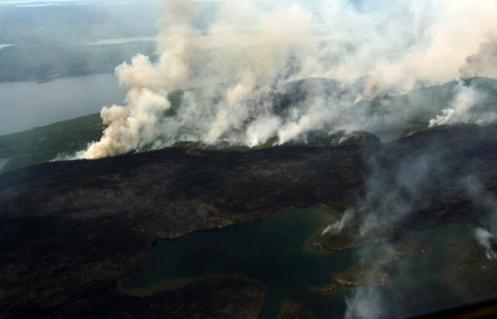
Boreal forest file photo: NASA.
Image credit: "Aerial view of sea side Miami." Photograph by George Steinmetz, National Geographic Creative.
Game of Thrones is Secretly All About Climate Change. Wait, (endless) summer is coming? Vox explains: "...The White Walkers are some of Thrones’ creepiest monsters — but they also help tell a really interesting metaphor about climate change.
For starters, the White Walkers are a threat to all humanity: Their
zombie minions are equally happy to rip apart people of all nations and
noble houses. Yet instead of uniting to combat the shared threat to
human existence, the houses in the show spend basically all their time
on their own petty disagreements and struggle for power. White Walkers
are generally ignored; some nobles deny their existence outright. Swap
climate change for White Walkers and "countries" for noble houses, and
it starts to sound a lot like the real world..."
No comments:
Post a Comment